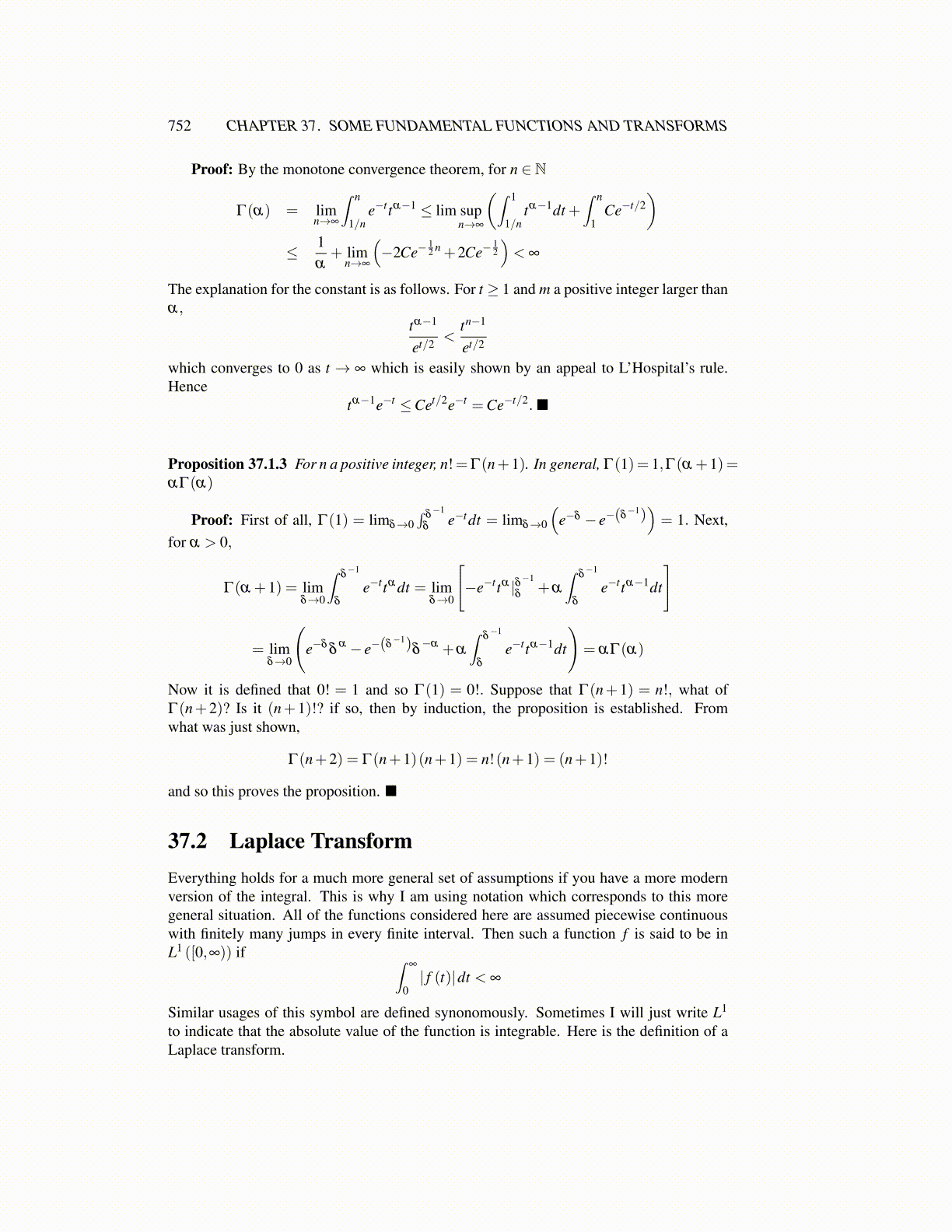
752 CHAPTER 37. SOME FUNDAMENTAL FUNCTIONS AND TRANSFORMS
Proof: By the monotone convergence theorem, for n ∈ N
Γ(α) = limn→∞
∫ n
1/ne−ttα−1 ≤ lim sup
n→∞
(∫ 1
1/ntα−1dt +
∫ n
1Ce−t/2
)≤ 1
α+ lim
n→∞
(−2Ce−
12 n +2Ce−
12
)< ∞
The explanation for the constant is as follows. For t ≥ 1 and m a positive integer larger thanα,
tα−1
et/2 <tn−1
et/2
which converges to 0 as t → ∞ which is easily shown by an appeal to L’Hospital’s rule.Hence
tα−1e−t ≤Cet/2e−t =Ce−t/2.■
Proposition 37.1.3 For n a positive integer, n!=Γ(n+1). In general, Γ(1)= 1,Γ(α +1)=αΓ(α)
Proof: First of all, Γ(1) = limδ→0∫
δ−1
δe−tdt = limδ→0
(e−δ − e−(δ
−1))= 1. Next,
for α > 0,
Γ(α +1) = limδ→0
∫δ−1
δ
e−ttα dt = limδ→0
[−e−ttα |δ
−1
δ+α
∫δ−1
δ
e−ttα−1dt
]
= limδ→0
(e−δ
δα − e−(δ
−1)δ−α +α
∫δ−1
δ
e−ttα−1dt
)= αΓ(α)
Now it is defined that 0! = 1 and so Γ(1) = 0!. Suppose that Γ(n+1) = n!, what ofΓ(n+2)? Is it (n+1)!? if so, then by induction, the proposition is established. Fromwhat was just shown,
Γ(n+2) = Γ(n+1)(n+1) = n!(n+1) = (n+1)!
and so this proves the proposition. ■
37.2 Laplace TransformEverything holds for a much more general set of assumptions if you have a more modernversion of the integral. This is why I am using notation which corresponds to this moregeneral situation. All of the functions considered here are assumed piecewise continuouswith finitely many jumps in every finite interval. Then such a function f is said to be inL1 ([0,∞)) if ∫
∞
0| f (t)|dt < ∞
Similar usages of this symbol are defined synonomously. Sometimes I will just write L1
to indicate that the absolute value of the function is integrable. Here is the definition of aLaplace transform.